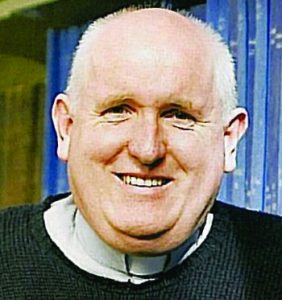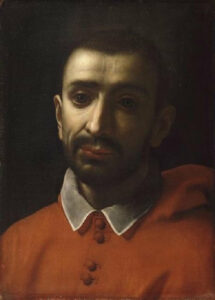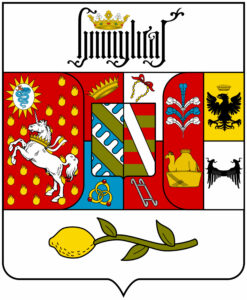St Charles Borromeo – 4 November

By Fr Mervyn Duffy SM
St Charles Borromeo was the child of a rich and powerful family. His career in the church was given a huge boost by having his uncle being made Pope. After such a beginning, he may have been expected to be a self-serving, indulgent clerical non-entity, but instead he became a major force for reform.
Charles was born in Italy on 2 October 1538, which meant that the events and effects of the Protestant Reformation were the background to his life. His father was a Count and his mother, Margaret, was part of the Medici family. Charles was the second son, so his older brother, Frederico, would inherit the title and Charles, who had a slight speech impediment, was expected to find a role within the Church.

Portrait of Carolus Borromeus, by Carlo Dolci,1659
He took the tonsure (became a cleric in minor orders) at the age of 12, and was given the income from a rich Benedictine abbey by his paternal uncle, and he went off to study Law (church & civil) at the University of Pavia. Despite various family commitments he completed a doctorate by the age of 21. Just over a fortnight after he was awarded his doctorate, on Christmas Day 1859, his uncle Giovanni Angelo Medici was elected as Pope Pius IV.
Charles was summoned to Rome to be part of the papal household and administration. Almost straight away, on 31 January 1860, Pope Pius appointed Charles as a Cardinal. It is a meteoric rise to power and position. He went from university student to one of the top positions in the church while still a layman. He was involved in the running of the Papal States, was appointed supervisor of the Franciscans, the Carmelites and the Knights of Malta and administrator of the vacant diocese of Milan.
He played a significant role in the diplomatic efforts to get the Council of Trent re-started in 1562 after it had been suspended for ten years, and he took on the Council’s vision of a church needing reform. Later that year, his elder brother Frederico, died suddenly and his relatives wanted Charles to take over as head of the family, get married and ensure the family line continued. They even got the Pope to agree to the idea. Charles upset their plans by secretly being ordained as a priest. Seeing that he was determined to have an ecclesiastical career, the Pope promptly had him consecrated as a Bishop and appointed him Archbishop of Milan, a diocese with over 3,000 clergy and a population of more than 800,000 Catholics.

Borromeo family coat of arms with the motto ‘Humylitas’
Charles worked on implementing the reforms of the Council of Trent, the Catechism, the Missal and the Breviary. He also reformed the diocese of Milan, initially working from Rome but, after his uncle died in 1566, he was able to move to his diocese. He set up the Confraternity of Christian Doctrine (CCD) to teach the faith to children, which was to be the inspiration for a world-wide Sunday School movement. He established seminaries, colleges, and communities for the education of candidates for priesthood.
In 1577 he published Instructiones Fabricae et Supellectilis Ecclesiasticae (Instructions for the Building and Furnishing of Churches) which proved enormously influential on Church architecture. Among other novelties, it introduced confessional boxes:
‘First of all the confessional will be made entirely of worked wooden panels, either walnut, or some other type of wood. These will enclose it on both sides and on the back and will cover the upper part, while it will be completely open in the front part, and must not be closed in any way.
It can however have, above all in the more frequented churches, a latticework door or a wooden gate, the parts of which are about four ounces apart, furnished with lock and key so that, when the confessor is not there, laymen, vagabonds or dirty people cannot idly sit or sleep therein, with irreverence of the sacred function there exercised.’
When there was a famine in his diocese, he fed 3,000 people at his own expense for three months. He personally visited the hospital when plague struck and shamed his clergy into following his example.
His reforms were not always popular. He introduced grills into enclosed convents. His aunts, who were Dominican sisters, took this as a personal insult. During one visitation he had the door of a church slammed shut in his face and he was shot at, damaging the crucifix he was carrying. He attempted to reform a particularly rich and corrupt order of monks, which upset them so thoroughly that one of their number attempted to assassinate him during evening prayer in his household. The bullet lodged in his clothing. That congregation was subsequently suppressed by the Pope.
In 1584, during his annual retreat, he fell ill with "intermittent fever and ague", and on returning to Milan grew rapidly worse. After being anointed, he quietly died on 3 November at the age of 46. A relatively short and very dramatic life that had a huge impact on the Church.
Prayer of St Charles Borromeo
Almighty God, you have generously made known to human beings the mysteries of your life through Jesus Christ your Son in the Holy Spirit. Enlighten my mind to know these mysteries
which your Church treasures and teaches.
Move my heart to love them and my will to live in accord with them.
Give me the ability to teach this Faith to others without pride, without
ostentation, and without personal gain.
Let me realise that I am simply your instrument for bringing others to the knowledge of the wonderful things you have done for all your creatures.
Help me to be faithful to this task that you have entrusted to me.
Amen.
 Entries(RSS)
Entries(RSS)